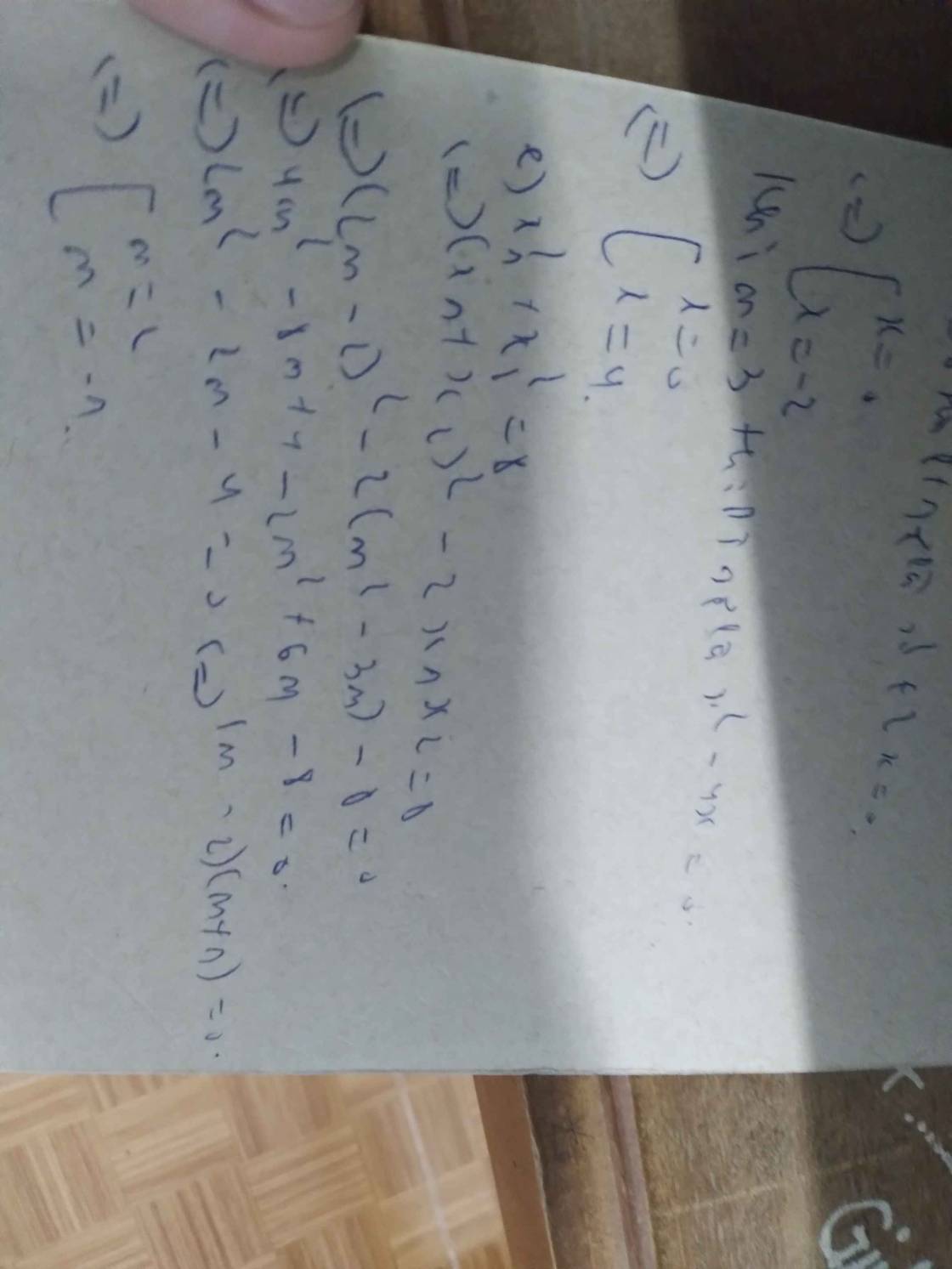1, x2+mx+4=0 tìm m để pt có 2 nghiệm tm \(\frac{1}{x^4_1}+\frac{1}{x^4_2}=\frac{257}{256}\)
2, 8x2 -8x+m2+1=0 tìm m để t có 2 nghiệm pb tm (4x1+5)(4x2+5)+19=0
3, x2 -6x +m -3=0 tìm m để pt có 2 nghiệm pb tm (x1-1)(x22-5x2+m-4)=2
4, 2x2 -4mx +2m2-1=0 tìm m để pt có 2 nghiệm tm 2x12+4mx2+2m2-1\(\ge\)0
5, x2 -2(m-1)x+m2=0 tìm m để pt có 2 nghiệm tm (x1-x2)2 +6m=x1-2x2






















